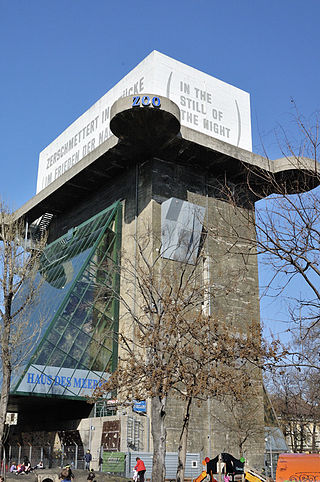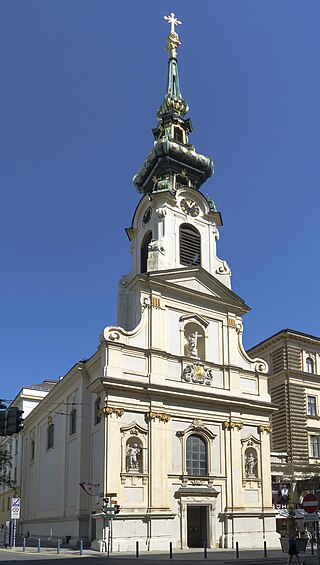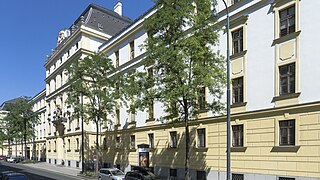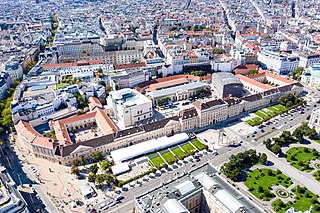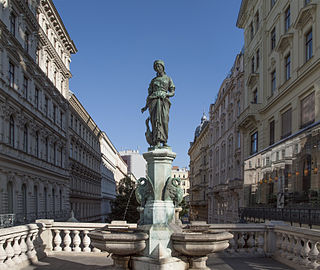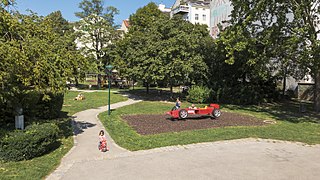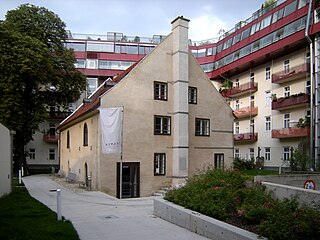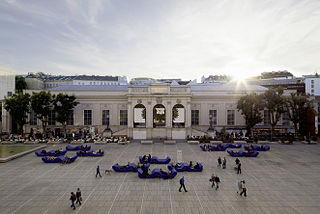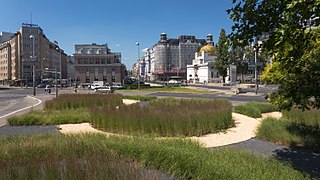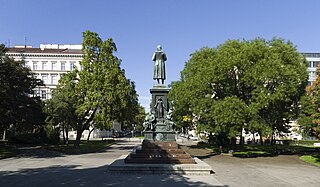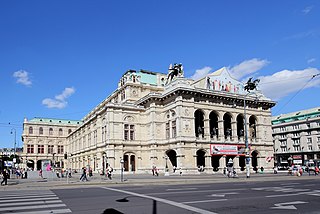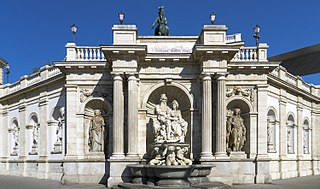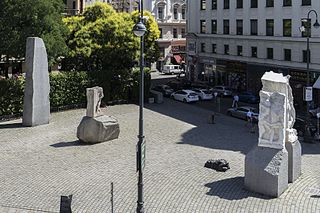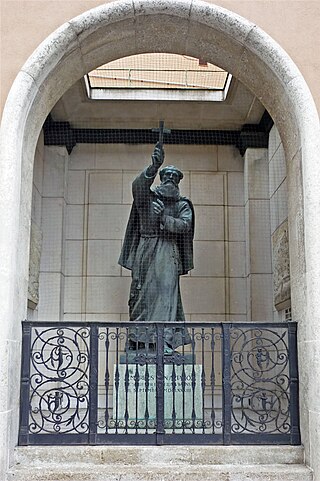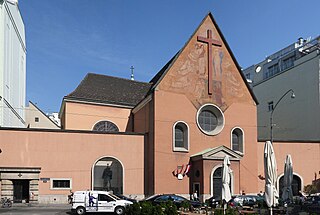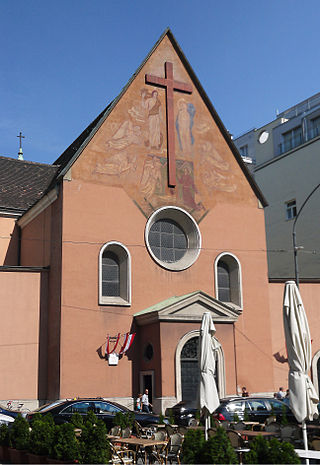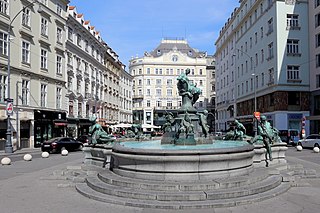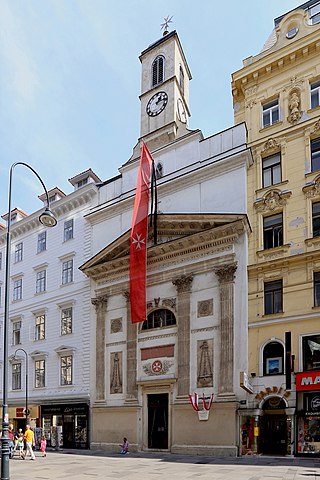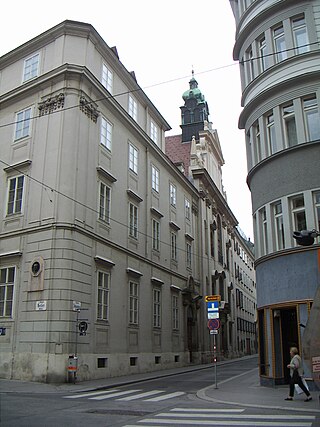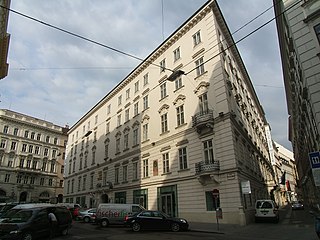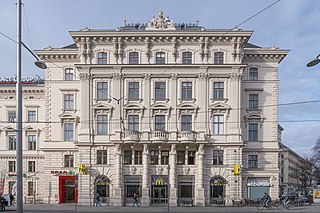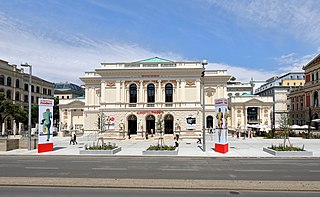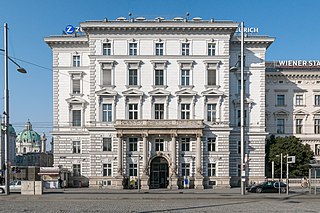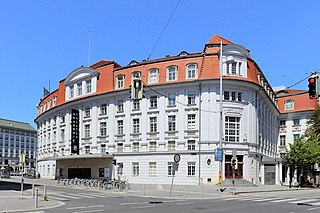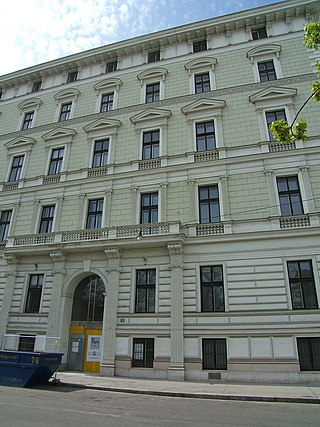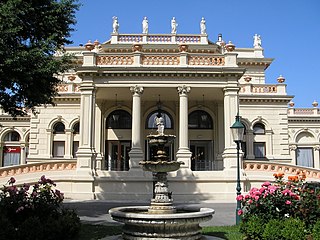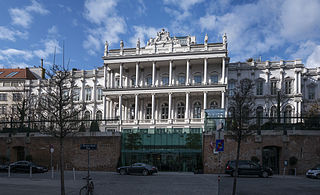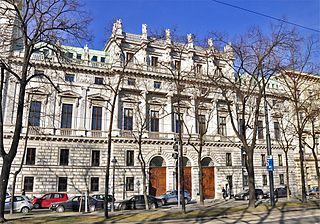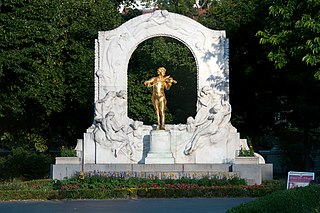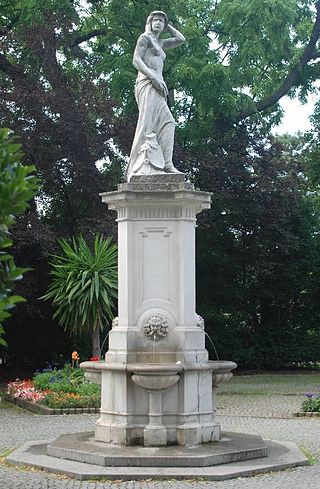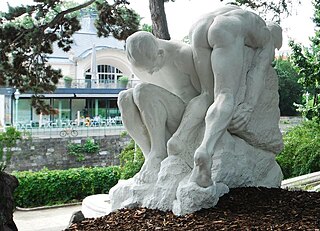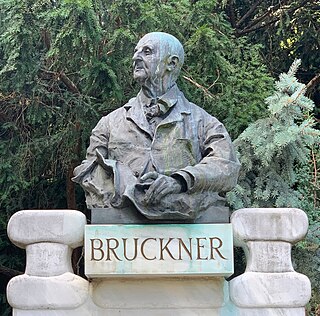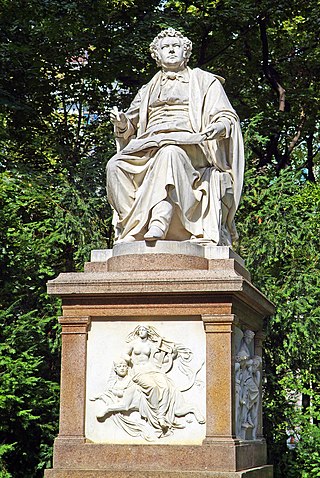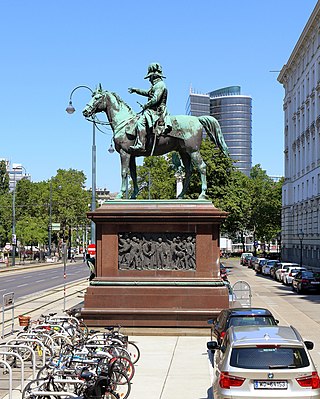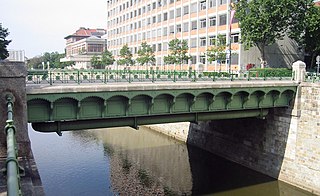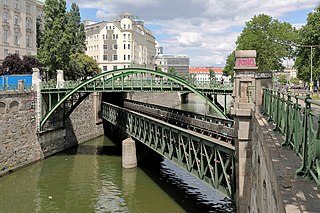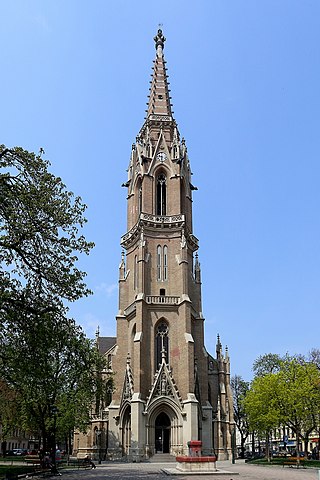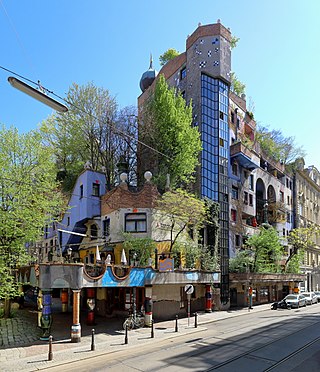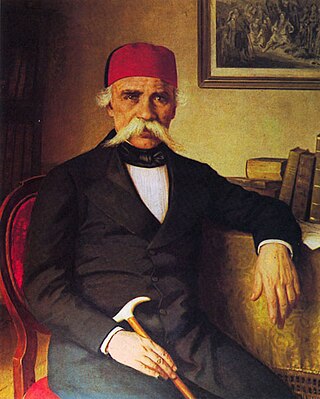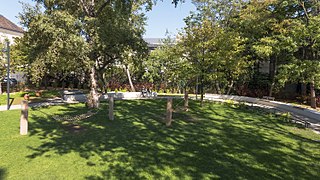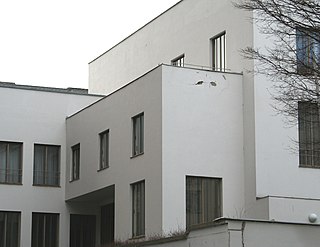Self-guided Sightseeing Tour #5 in Vienna, Austria
Legend
Guided Free Walking Tours
Book free guided walking tours in Vienna.
Guided Sightseeing Tours
Book guided sightseeing tours and activities in Vienna.
Tour Facts
12.2 km
285 m
Experience Vienna in Austria in a whole new way with our self-guided sightseeing tour. This site not only offers you practical information and insider tips, but also a rich variety of activities and sights you shouldn't miss. Whether you love art and culture, want to explore historical sites or simply want to experience the vibrant atmosphere of a lively city - you'll find everything you need for your personal adventure here.
Activities in ViennaIndividual Sights in ViennaSight 1: Esterházypark
The Esterházypark is a historically created park in today's sixth district of Vienna, Mariahilf. He was named after the Hungarian aristocratic family Esterházy, who had the former Palais Kaunitz here in the suburb of 1814 to 1868. The suburb was incorporated into Vienna in 1850.
Sight 2: Haus des Meeres
The Haus des Meeres is a public aquarium in Vienna, Austria. It is located in Esterhazy Park in the centre of Mariahilf district, one block south of the busy Mariahilfer Straße. The Haus des Meeres houses over ten thousand aquatic beings on an area of around 4,000 square meters (43,000 sq ft) inside a tall concrete flak tower built during World War II. In 2012 the Haus des Meeres attracted a record high of 650,000 visitors. The Haus des Meeres is managed by Aqua Terra Zoo, a private non-profit organization which, according to its web site, receives only marginal financial support from municipal authorities. However, the maintenance costs for the former flak tower are paid by the taxpayer.
Wikipedia: Haus des Meeres (EN), Website, Twitter, Facebook, Instagram, Youtube
Sight 3: Mariahilfer Kirche
The Church of Mariahilf is a Baroque parish church and the church of the Congregation of Saint Michael the Archangel in Vienna. It is located in Vienna's 6th district (Mariahilf).
Sight 4: Stiftskirche
The collegiate church "Zum heiligen Kreuz" is located at Mariahilfer Straße 24 in Vienna's 7th district Neubau, is part of the Stiftkaserne and has been the Roman Catholic Garrison Church of Vienna since 1921.
Sight 5: Stiftskaserne
The Stiftkasernne, officially Stiftkaserne General Spannocchi, named after the officer Emil Spannocchi, also Amtsgebäude Stiftgasse General Spannocchi, in the 7th district of Vienna, Neubau, is a military building in Vienna. It is located in Stiftgasse 2 – 2a, a side street of Mariahilfer Straße. On the initiative of Defence Minister Thomas Starlinger, the name was named after Emil Spannocchi on 27 January 2020.
Sight 6: MuseumsQuartier
The Museumsquartier (MQ) is an area of 9 ha in the 7th district of the city of Vienna, Austria.
Sight 7: Leopold Museum
The Leopold Museum, housed in the Museumsquartier in Vienna, Austria, is home to one of the largest collections of modern Austrian art, featuring artists such as Egon Schiele, Gustav Klimt, Oskar Kokoschka, and Richard Gerstl.
Sight 8: Gänsemädchenbrunnen
The Gänsemädchenbrunnen is a listed fountain on the Rahlstiege in Vienna's 6th district of Mariahilf.
Sight 9: Alfred-Grünwald-Park
With around 9,000 m², Alfred Grünwald Park is the second largest park in Vienna's 6th district of Mariahilf.
Sight 10: Miniatur Tirolerland
Miniatur Tirolerland is the name of a miniature world in the form of a model building landscape in Vienna's 5th district of Margareten, in the immediate vicinity of the Naschmarkt.
Sight 11: Wiedner Heumühle
The hay mill in Vienna's 4th district is a former water mill that dates back to the 14th century in its current form. The building, known as the Steinmühle until the 17th century, is considered the second oldest secular building in Vienna after the Berghof in Heiligenstadt.
Sight 12: Kunsthalle Wien Karlsplatz
Kunsthalle Wien is the city of Vienna's institution for international contemporary art and discourse with two locations, in the Museumsquartier and at Karlsplatz. Kunsthalle Wien does not have a collection of its own, but instead dedicates its changing solo and thematic exhibitions to art and its relations to social change. It produces exhibitions, researches art practices, and supports local and international artists. It seeks to ground its knowledge of international contemporary art in and for Vienna, and advocates for the usefulness of artistic thinking in the wider public sphere.
Sight 13: Girardipark
Esperantopark and Girardipark are two green spaces in Vienna's 1st district, Innere Stadt, separated only by a sidewalk.
Sight 14: Schillerpark
Schillerplatz is a square in Innere Stadt, Vienna, Austria.
Sight 15: Vienna State Opera
The Vienna State Opera is a historic opera house and opera company based in Vienna, Austria. The 1,709-seat Renaissance Revival venue was the first major building on the Vienna Ring Road. It was built from 1861 to 1869 following plans by August Sicard von Sicardsburg and Eduard van der Nüll, and designs by Josef Hlávka. The opera house was inaugurated as the "Vienna Court Opera" in the presence of Emperor Franz Joseph I and Empress Elisabeth of Austria. It became known by its current name after the establishment of the First Austrian Republic in 1921. The Vienna State Opera is the successor of the old Vienna Court Opera. The new site was chosen and the construction paid by Emperor Franz Joseph in 1861.
Sight 16: Albrechtsbrunnen
Join Free Tour*The Albrechtsbrunnen, also known as the Danubiusbrunnen, is a fountain in the 1st district of Vienna, the inner city. It is located on the Augustinian Bastion and bears its name after Field Marshal Archduke Albrecht of Austria-Teschen, who lived in the building of today's Albertina on the Bastion, the Palais Erzherzog Albrecht, at that time.
Sight 17: Albertina
The Albertina is a museum in the Innere Stadt of Vienna, Austria. It houses one of the largest and most important print rooms in the world with approximately 65,000 drawings and approximately 1 million old master prints, as well as more modern graphic works, photographs and architectural drawings. Apart from the graphics collection the museum has acquired, on permanent loan two significant collections of Impressionist and early 20th-century art, some of which are on permanent display. The museum also houses temporary exhibitions. The museum had 360,073 visitors in 2020, down 64 percent from 2019 due to the COVID-19 pandemic, but still ranked 55th in the List of most-visited art museums in the world.
Sight 18: Mahnmal gegen Krieg und Faschismus
The memorial against war and fascism is a work by the Austrian sculptor Alfred Hrdlicka. It has been standing since 1988 on the Albertinaplatz in Vienna – named after Helmut Zilk in 2009 – opposite the Palais Archduke Albrecht and the back of the Vienna State Opera. As a walk-in monument, it is intended to serve as a reminder of the darkest epoch in Austrian history. It is dedicated to all victims of war and fascism.
Sight 19: Kapuzinerkloster
The Capuchin Monastery in Vienna is a branch of Capuchin friars in Vienna. Together with the Capuchin Church, it is located in Vienna's city center on the Neuer Markt. Below the monastery complex is the Capuchin crypt, the burial place of the Habsburgs.
Sight 20: Kapuzinerkirche
The Capuchin Church in Vienna, Austria, is a Roman Catholic church and monastery run by the Order of Friars Minor Capuchin. Located on the Neuer Markt square in the Innere Stadt near the Hofburg Palace, the Capuchin Church is most famous for containing the Imperial Crypt, the final resting place for members of the House of Habsburg. The official name is the Church of Saint Mary of the Angels.
Sight 21: Imperial Crypt
The Imperial Crypt, also called the Capuchin Crypt (Kapuzinergruft), is a burial chamber beneath the Capuchin Church and monastery in Vienna, Austria. It was founded in 1618 and dedicated in 1632, and located on the Neuer Markt square of the Innere Stadt, near the Hofburg Palace. Since 1633, the Imperial Crypt serves as the principal place of entombment for the members of the House of Habsburg. The bones of 145 Habsburg royalty, plus urns containing the hearts or cremated remains of four others, are here, including 12 emperors and 18 empresses. The visible 107 metal sarcophagi and five heart urns range in style from puritan plain to exuberant rococo. Some of the dozen resident Capuchin friars continue their customary role as the guardians and caretakers of the crypt, along with their other pastoral work in Vienna. The most recent entombment was in 2023.
Sight 22: Donnerbrunnen
Donnerbrunnen ist der volkstümliche Name für den von Georg Raphael Donner gestalteten und von 1737 bis 1739 errichteten Providentiabrunnen auf dem Neuen Markt im 1. Wiener Gemeindebezirk Innere Stadt. Die Wiener konnten mit dem Begriff providentia jedoch wenig anfangen, weshalb sie ihn nach seinem Erbauer benannten. Kunsthistorisch ist öfter auch vom Mehlmarktbrunnen die Rede, da der Neue Markt im 18. Jahrhundert noch Mehlmarkt hieß. Beim Bau einer Tiefgarage wurde der Brunnen 2018 bis 2022 temporär abgetragen.
Sight 23: Malteserkirche hl. Johannes der Täufer
The Maltese Church is a Roman Catholic Gothic church of the Knights Hospitaller in Vienna, on Kärntner Straße in the 1. Wiener Gemeindebezirk Innere Stadt.
Sight 24: Ursulinenkirche
The St. Ursula Church is a Roman Catholic church at Seilerstätte 26 in Vienna's 1st district of Innere Stadt.
Sight 25: Palais Erzherzog Carl-Ypsilanti
The Palais Erzherzog Carl is located in the 1st district of Vienna, Innere Stadt, Seilerstätte 30.
Sight 26: Palais Wertheim
The Palais Wertheim is a palace in the Ringstrasse style and is located at Schwarzenbergplatz 17 / Kärntner Ring 18 in Vienna's 1st district.
Sight 27: Künstlerhaus Wien
The Künstlerhaus in Vienna's 1st district has accommodated the Künstlerhaus Vereinigung since 1868. It is located in the Ringstrassenzone in between Akademiestraße, Bösendorferstraße and Musikvereinsplatz.
Sight 28: Palais Ofenheim
The Palais Ofenheim is a palace in the style of the Ringstrasse and is located at Schwarzenbergplatz 15 in Vienna's 1st district.
Sight 29: Akademietheater
The Akademietheater in Vienna, Austria, is the smaller of two performance halls of the Burgtheater organization. It was constructed in the years 1911 to 1913 by architects Fellner & Helmer and is considered today part of Austria's Federal Theatres (Bundestheater). Located on Lisztstrasse, in Vienna's third district, it is attached to its neighboring building, the Konzerthaus, a well-known performance venue for concerts.
Sight 30: Palais Gutmann
Palais Gutmann is a Ringstraßenpalais in Vienna, Austria. It was built for the coal trading Gutmann family. It was built in 1869–1871. The architect was Carl Tietz.
Sight 31: Kursalon Hübner
Kursalon is a music hall in Vienna, designed by Johann Garben in the style of the Italian Renaissance and built between 1865 and 1867.
Sight 32: Ronacher
The Ronacher theater, originally Etablissement Ronacher, is a theater in the Innere Stadt district of Vienna, Austria.
Sight 33: St. Hieronymus
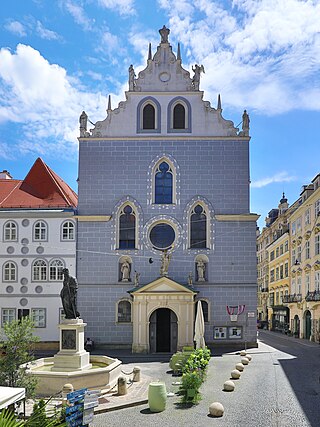
The Franciscan Church, also known as the Church of St. Jerome, is a Roman Catholic parish church dedicated to Saint Jerome and located in the historic city center of Vienna, Vienna's 1st district. It is the church of the Franciscan Order in Vienna.
Sight 34: Palais Coburg
Palais Coburg, also known as Palais Saxe-Coburg, is a palace in Vienna, Austria. It was owned by the Kohary branch of the House of Saxe-Coburg and Gotha.
Sight 35: Palais Erzherzog Wilhelm
The Deutschmeister-Palais or Palais Erzherzog Wilhelm is a building in Vienna located at Parkring 8.
Sight 36: Johann Strauss Monument
The Johann Strauss Monument is located in Vienna's Stadtpark and is one of the most photographed monuments in Vienna. It was erected in memory of the "Waltz King" Johann Strauss (son) next to the Kursalon Hübner. His naming is based on the spelling of his family name as Strauss, which was common at the time of its construction.
Sight 37: Donauweibchen-Brunnen
The Donauweibchenbrunnen in the part of Vienna's Innere Stadtpark located in Vienna's 1st district, Innere Stadt, is one of six fountains in this park.
Sight 38: Release of the Source Fountain
The Liberation of the Spring Fountain in the part of Vienna's Stadtpark located in Vienna's 1st district, Innere Stadt, is one of six fountains in this park.
Sight 39: Anton Bruckner
The Bruckner Monument in Vienna's Stadtpark is a bronze bust depicting the Austrian composer Anton Bruckner (1824–1896).
Sight 40: Franz Schubert
The Schubert Monument, a statue in the Stadtpark in Vienna, Austria, is a memorial to the composer Franz Schubert (1797–1828), unveiled in 1872.
Sight 41: Radetzky-Denkmal
The Radetzky monument in front of the government building at Stubenring 1 in the Austrian capital Vienna is an equestrian statue from 1892 and dedicated to the probably most important military commander of the Austrian Empire, Field Marshal Josef Wenzel Radetzky von Radetz.
Sight 42: Kleine Marxerbrücke
The Kleine Marxerbrücke is a bridge over the Vienna River and connects the two Viennese districts of Innere Stadt and Landstraße.
Sight 43: Zollamtssteg
The Zollamtssteg – a bridge for pedestrians and cyclists – crosses the Vienna River in Vienna just before it flows into the Danube Canal and connects the districts of Landstraße and Innere Stadt.
Sight 44: St. Othmar
The Roman Catholic parish church of St. Othmar unter den Weißgerbern is located in the 3rd district of Vienna Landstraße in the Weißgerberviertel on Kolonitzplatz. The parish lies in the city deanery 3 of the Vicariate of Vienna City, which belongs to the Archdiocese of Vienna. It was built between 1866 and 1873 in the neo-Gothic style according to plans by the architect Friedrich von Schmidt and is dedicated to St. Othmar. It is the successor church of three smaller churches and chapels.
Wikipedia: Pfarrkirche St. Othmar unter den Weißgerbern (DE), Website
Sight 45: Hundertwasserhaus
Get Ticket*The Hundertwasserhaus is an apartment house in Vienna, Austria, completed in 1985, after the idea and concept of Austrian artist Friedensreich Hundertwasser.
Sight 46: Vuk Stefanović Karadžić
Vuk Stefanović Karadžić was a Serbian philologist, anthropologist and linguist. He was one of the most important reformers of the modern Serbian language. For his collection and preservation of Serbian folktales, Encyclopædia Britannica labelled Karadžić "the father of Serbian folk-literature scholarship." He was also the author of the first Serbian dictionary in the new reformed language. In addition, he translated the New Testament into the reformed form of the Serbian spelling and language.
Sight 47: Grete-Jost-Park
Grete-Jost-Park is a park in Vienna's 3rd district, Landstraße. It is located behind the headquarters of the Austrian Post "Post am Rochus" between Erdbergstraße and Rasumofskygasse. Due to the construction of the new post office, the park was closed until 2017. It has an area of 1,500 m².
Sight 48: Haus Wittgenstein
Haus Wittgenstein is a house in the modernist style on the Kundmanngasse, Vienna, Austria. It "shows remarkably similar characteristics in its obsession with detail and complete disregard for the requirements of the people who are expected to live within it." The house was commissioned by Margaret Stonborough-Wittgenstein, who asked the architect Paul Engelmann to design a townhouse for her. Stonborough-Wittgenstein invited her brother, the philosopher Ludwig Wittgenstein, to help with the design. In the end, he became more author than helper.
Share
Disclaimer Please be aware of your surroundings and do not enter private property. We are not liable for any damages that occur during the tours.
GPX-Download For navigation apps and GPS devices you can download the tour as a GPX file.

